-
 Bitcoin
Bitcoin $107,725.9156
0.27% -
 Ethereum
Ethereum $2,481.6786
1.84% -
 Tether USDt
Tether USDt $1.0003
0.01% -
 XRP
XRP $2.2154
1.26% -
 BNB
BNB $658.2447
1.42% -
 Solana
Solana $157.2028
4.24% -
 USDC
USDC $1.0000
0.02% -
 TRON
TRON $0.2788
0.91% -
 Dogecoin
Dogecoin $0.1655
1.00% -
 Cardano
Cardano $0.5714
2.67% -
 Hyperliquid
Hyperliquid $40.6187
6.30% -
 Bitcoin Cash
Bitcoin Cash $519.8117
5.84% -
 Sui
Sui $2.8338
0.59% -
 Chainlink
Chainlink $13.4150
0.60% -
 UNUS SED LEO
UNUS SED LEO $9.1205
-0.54% -
 Avalanche
Avalanche $18.0666
0.85% -
 Stellar
Stellar $0.2363
-0.46% -
 Toncoin
Toncoin $2.9550
2.57% -
 Shiba Inu
Shiba Inu $0.0...01151
-0.15% -
 Litecoin
Litecoin $86.2252
-0.57% -
 Hedera
Hedera $0.1498
1.51% -
 Monero
Monero $318.0620
3.18% -
 Polkadot
Polkadot $3.4174
-0.02% -
 Dai
Dai $1.0000
0.02% -
 Bitget Token
Bitget Token $4.5444
-1.05% -
 Ethena USDe
Ethena USDe $1.0003
0.00% -
 Uniswap
Uniswap $7.1773
-0.53% -
 Pepe
Pepe $0.0...09916
3.19% -
 Aave
Aave $274.7399
0.32% -
 Pi
Pi $0.5136
-2.06%
What are Layer 2 solutions in DeFi and how do they improve efficiency?
Layer 2 solutions boost DeFi scalability by processing transactions off-chain, reducing congestion and gas fees on the main blockchain (Layer 1). Various L2 types, including rollups and state channels, offer different trade-offs between speed, cost, and security.
Mar 13, 2025 at 07:01 pm
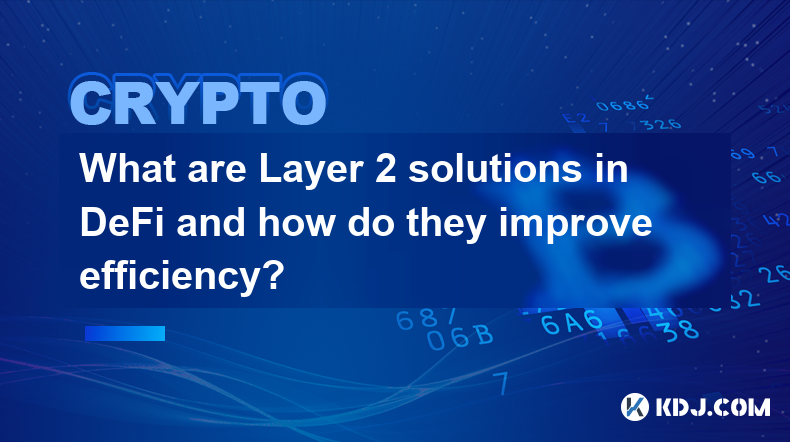
Key Points:
- Layer 2 (L2) solutions are technologies built on top of existing blockchain networks (like Ethereum) to enhance scalability and transaction speed.
- They achieve this by processing transactions off-chain, reducing the load on the main blockchain (Layer 1).
- Several types of L2 solutions exist, each with its own strengths and weaknesses, including state channels, rollups (optimistic and zk-SNARKs), and sidechains.
- L2 solutions significantly improve transaction throughput, reduce gas fees, and enhance the overall user experience in decentralized finance (DeFi).
What are Layer 2 Solutions in DeFi?
Decentralized finance (DeFi) applications built on blockchains like Ethereum often face scalability challenges. High transaction volumes lead to network congestion, resulting in slow transaction times and expensive gas fees. Layer 2 (L2) solutions address these issues by moving transaction processing off the main blockchain (Layer 1). This allows Layer 1 to focus on security and finality while L2 handles the increased transaction load. Think of it like adding extra lanes to a highway to alleviate traffic congestion.
How do Layer 2 Solutions Improve Efficiency?
L2 solutions improve efficiency in several ways. Primarily, they dramatically increase transaction throughput. By processing transactions off-chain, they bypass the limitations of the main blockchain's processing capacity. This translates to faster transaction confirmations and a smoother user experience, especially crucial for applications with high transaction volumes like decentralized exchanges (DEXs).
Furthermore, L2 solutions significantly reduce gas fees. Because transactions are not directly processed on the expensive Layer 1 network, the costs associated with each transaction are considerably lower. This makes DeFi applications more accessible to a wider range of users, especially those with smaller budgets.
Types of Layer 2 Solutions:
Several different types of L2 solutions exist, each with its own mechanisms for achieving scalability. Understanding these differences is crucial for evaluating their suitability for specific DeFi applications.
- State Channels: These create a dedicated communication channel between two or more parties. Transactions are conducted off-chain, and only the final state is recorded on the main blockchain. This minimizes on-chain activity, reducing congestion and fees. However, state channels require participants to remain online and are best suited for frequent interactions between a small group.
Rollups: These bundle multiple transactions into a single transaction on the main chain. This reduces the number of individual transactions that need to be processed on Layer 1, significantly improving scalability. There are two main types:
- Optimistic Rollups: These assume transactions are valid unless proven otherwise. A challenge period allows for disputes to be resolved. They offer a balance between scalability and security.
- ZK-Rollups (Zero-Knowledge Rollups): These use cryptographic proofs to verify the validity of transactions without revealing the transaction details. They offer superior scalability and privacy compared to optimistic rollups, but are more complex to implement.
- Sidechains: These are independent blockchains that run parallel to the main chain. They can process transactions faster and cheaper but require a bridge mechanism to interact with the main chain. Security depends on the sidechain's own consensus mechanism, which may introduce some risks.
How L2 Solutions Impact DeFi Applications:
The impact of L2 solutions on DeFi is profound. They enable the creation of more complex and user-friendly applications. For instance, decentralized exchanges (DEXs) operating on L2 can handle a much larger volume of trades without sacrificing speed or incurring exorbitant fees. This makes DEXs more competitive with centralized exchanges, potentially driving wider adoption of DeFi.
Furthermore, L2 solutions facilitate the development of new DeFi primitives. The improved scalability opens up possibilities for applications that were previously impractical due to high transaction costs and slow confirmation times. This could lead to innovative new DeFi products and services. The lower costs also make DeFi more accessible to users in developing countries with limited access to high-speed internet or fiat currencies.
The Future of Layer 2 in DeFi:
The ongoing development and improvement of L2 solutions are crucial for the long-term growth and sustainability of the DeFi ecosystem. As L2 technology matures, we can expect even greater scalability, lower costs, and improved user experiences. The competition between different L2 solutions will also drive innovation and efficiency.
Frequently Asked Questions:
Q: Are Layer 2 solutions secure?
A: The security of L2 solutions depends on the specific type and implementation. While they offload transaction processing, the security of the underlying Layer 1 blockchain remains crucial. Rollups, in particular, benefit from the security of the main chain as they only post a summarized version of transactions. Sidechains, however, require independent security considerations.
Q: How do I use Layer 2 solutions?
A: The process of using L2 solutions varies depending on the specific platform. Many DeFi applications now offer seamless integration with various L2 networks. You may need to bridge your assets from Layer 1 to the chosen L2 network before interacting with DeFi applications on that layer. Instructions are usually provided by the specific DeFi application or L2 provider.
Q: What are the limitations of Layer 2 solutions?
A: While L2 solutions offer significant advantages, they are not without limitations. The complexity of implementation can be a barrier for some projects. Furthermore, the need for bridges between Layer 1 and L2 can introduce potential security risks or delays. Finally, the user experience might still require improvements as navigating between layers can be confusing for some users.
Disclaimer:info@kdj.com
The information provided is not trading advice. kdj.com does not assume any responsibility for any investments made based on the information provided in this article. Cryptocurrencies are highly volatile and it is highly recommended that you invest with caution after thorough research!
If you believe that the content used on this website infringes your copyright, please contact us immediately (info@kdj.com) and we will delete it promptly.
- Coinbase, Altcoins, and Listings: What's the Buzz?
- 2025-07-01 00:30:11
- Chainlink's Bullish Signals: Investors Bet on Long-Term Value
- 2025-07-01 00:50:12
- CICADA Finance Soars on BNB Chain: A TGE Deep Dive
- 2025-07-01 01:30:11
- MicroStrategy's Bitcoin Bet: Holdings, Sell-Off Concerns, and S&P 500 Dreams
- 2025-07-01 01:30:11
- XRPL EVM Sidechain: Ethereum dApps Unleashed on XRP Ledger!
- 2025-07-01 01:35:11
- Bybit, Kraken, and Tokenized Stocks: A New Era for Trading?
- 2025-07-01 00:30:11
Related knowledge

What is the difference between DeFi and CeFi? An article analyzing the advantages and disadvantages of both
Jun 13,2025 at 03:57am
Understanding the Foundations of DeFi and CeFiTo fully grasp the difference between DeFi (Decentralized Finance) and CeFi (Centralized Finance), it’s essential to understand their foundational structures. DeFi operates on blockchain technology, primarily using smart contracts to execute financial services without intermediaries. In contrast, CeFi platfo...
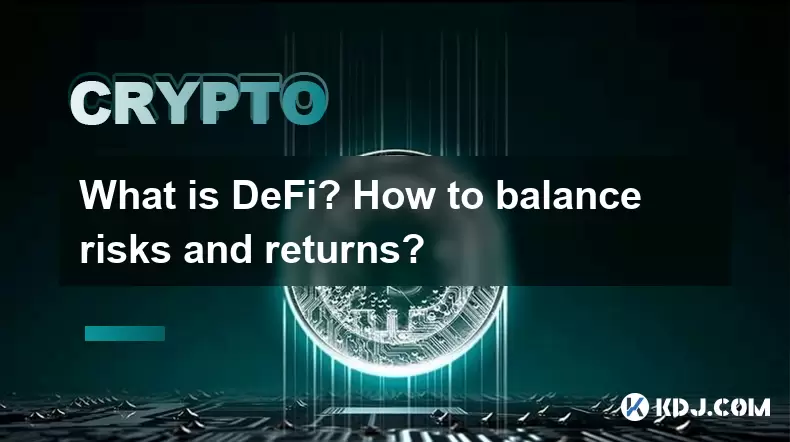
What is DeFi? How to balance risks and returns?
May 31,2025 at 12:22pm
What is DeFi? How to Balance Risks and Returns? Decentralized Finance, commonly known as DeFi, represents a revolutionary shift in the financial ecosystem, leveraging blockchain technology to create an open, permissionless, and transparent financial service network. Unlike traditional finance, which relies on centralized institutions like banks, DeFi op...
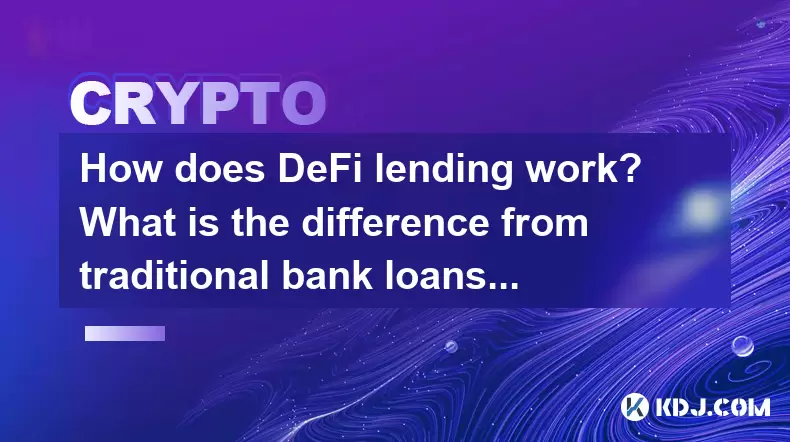
How does DeFi lending work? What is the difference from traditional bank loans?
May 29,2025 at 05:36pm
Introduction to DeFi LendingDeFi lending, or decentralized finance lending, represents a revolutionary shift in the way borrowing and lending are conducted. Unlike traditional bank loans, DeFi lending operates on blockchain technology, offering a decentralized, transparent, and often more accessible approach to finance. This article will explore the mec...
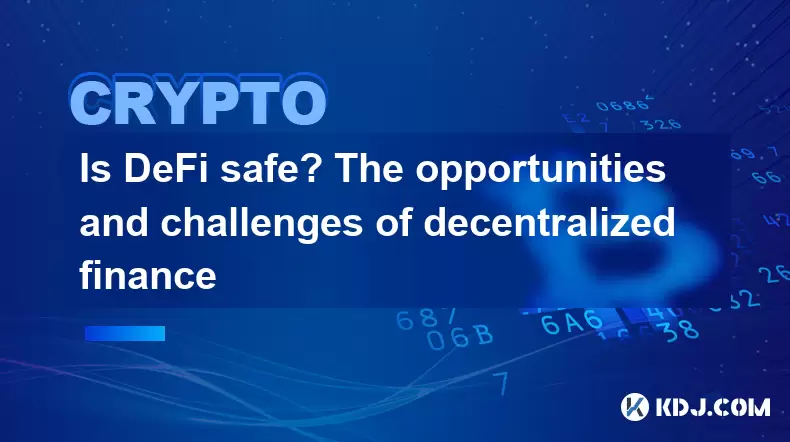
Is DeFi safe? The opportunities and challenges of decentralized finance
May 27,2025 at 02:28pm
Decentralized Finance, commonly known as DeFi, has revolutionized the financial landscape by offering a range of financial services without the need for traditional intermediaries like banks. As with any innovative technology, the question of safety is paramount. This article delves into the opportunities and challenges that come with DeFi, providing a ...
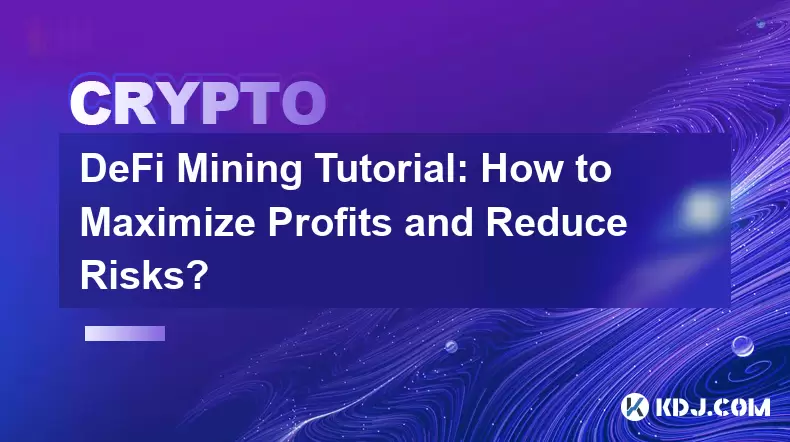
DeFi Mining Tutorial: How to Maximize Profits and Reduce Risks?
May 27,2025 at 07:42am
DeFi, or Decentralized Finance, has opened up a new world of opportunities for crypto enthusiasts looking to maximize their profits through various mining strategies. However, with great potential comes significant risk. This tutorial aims to guide you through the process of engaging in DeFi mining while focusing on maximizing profits and reducing risks...
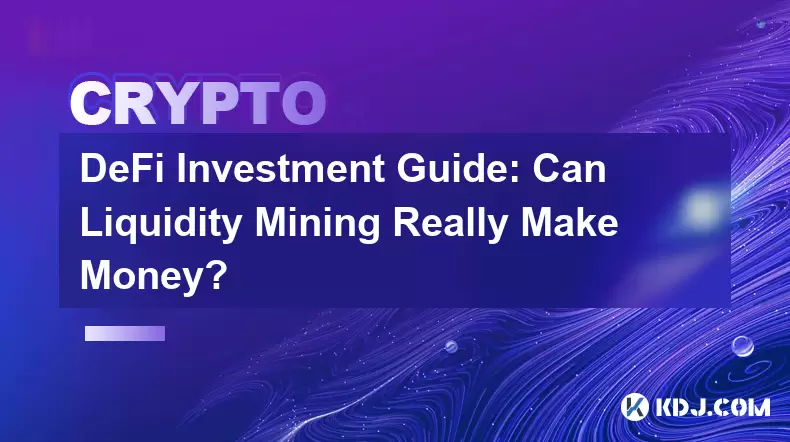
DeFi Investment Guide: Can Liquidity Mining Really Make Money?
May 28,2025 at 10:18am
Introduction to Liquidity Mining in DeFiLiquidity mining has emerged as a popular method for earning passive income within the decentralized finance (DeFi) space. This process involves users providing liquidity to decentralized exchanges or lending platforms in exchange for rewards, often in the form of the platform's native tokens. But the question on ...

What is the difference between DeFi and CeFi? An article analyzing the advantages and disadvantages of both
Jun 13,2025 at 03:57am
Understanding the Foundations of DeFi and CeFiTo fully grasp the difference between DeFi (Decentralized Finance) and CeFi (Centralized Finance), it’s essential to understand their foundational structures. DeFi operates on blockchain technology, primarily using smart contracts to execute financial services without intermediaries. In contrast, CeFi platfo...

What is DeFi? How to balance risks and returns?
May 31,2025 at 12:22pm
What is DeFi? How to Balance Risks and Returns? Decentralized Finance, commonly known as DeFi, represents a revolutionary shift in the financial ecosystem, leveraging blockchain technology to create an open, permissionless, and transparent financial service network. Unlike traditional finance, which relies on centralized institutions like banks, DeFi op...

How does DeFi lending work? What is the difference from traditional bank loans?
May 29,2025 at 05:36pm
Introduction to DeFi LendingDeFi lending, or decentralized finance lending, represents a revolutionary shift in the way borrowing and lending are conducted. Unlike traditional bank loans, DeFi lending operates on blockchain technology, offering a decentralized, transparent, and often more accessible approach to finance. This article will explore the mec...

Is DeFi safe? The opportunities and challenges of decentralized finance
May 27,2025 at 02:28pm
Decentralized Finance, commonly known as DeFi, has revolutionized the financial landscape by offering a range of financial services without the need for traditional intermediaries like banks. As with any innovative technology, the question of safety is paramount. This article delves into the opportunities and challenges that come with DeFi, providing a ...

DeFi Mining Tutorial: How to Maximize Profits and Reduce Risks?
May 27,2025 at 07:42am
DeFi, or Decentralized Finance, has opened up a new world of opportunities for crypto enthusiasts looking to maximize their profits through various mining strategies. However, with great potential comes significant risk. This tutorial aims to guide you through the process of engaging in DeFi mining while focusing on maximizing profits and reducing risks...

DeFi Investment Guide: Can Liquidity Mining Really Make Money?
May 28,2025 at 10:18am
Introduction to Liquidity Mining in DeFiLiquidity mining has emerged as a popular method for earning passive income within the decentralized finance (DeFi) space. This process involves users providing liquidity to decentralized exchanges or lending platforms in exchange for rewards, often in the form of the platform's native tokens. But the question on ...
See all articles

























































































